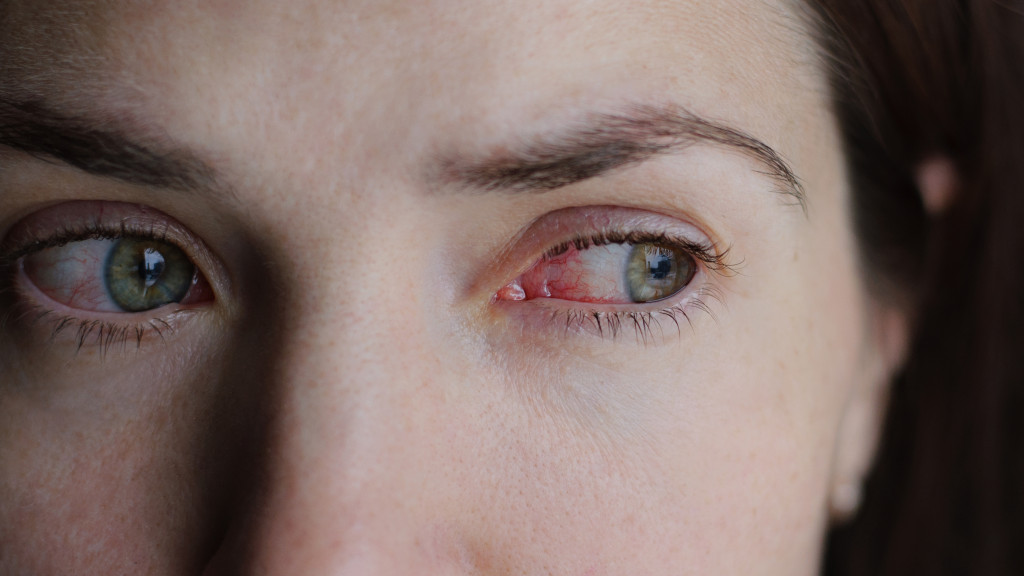- Cataracts can be caused by aging or genetics and can be treated with corrective eyewear or surgery.
- Glaucoma is caused by increased fluid pressure and can be treated with drops, laser treatments, or surgery.
- Diabetic retinopathy is a complication of diabetes that damages the retina’s blood vessels causing permanent vision loss without treatment.
- Age-related macular degeneration is a leading cause of vision loss and blindness in older adults.
- Conjunctivitis is an eye infection caused by bacteria or viruses that can be prevented by washing your hands regularly.
Eye health is essential for overall good health. Unfortunately, many don’t pay enough attention to care for their eyes until something goes wrong. It’s essential to be aware of common eye diseases and how they can affect your vision. Knowing the symptoms and treatments available for each condition could make a difference in preserving your vision or even reversing the damage done by one of these disorders.
1. Cataracts
Cataracts are the most common eye disorder worldwide and can affect anyone, regardless of age. A cataract is a clouding of the eye’s natural lens, which blocks or blurs vision. Symptoms include difficulty seeing at night, fading colors, increased glare from lights, blurred images, trouble reading small print, double vision in one eye, and generally hazy vision. Treatment includes corrective eyewear and surgery to replace your natural lens with an artificial one.
Cataracts are typically caused by aging but can also be due to genetics or trauma to the eye. Certain medications and conditions like diabetes and ultraviolet radiation from the sun may also increase your risk of developing cataracts. Unfortunately, there is no way to prevent cataracts. However, wearing sunglasses with UV protection can help reduce your risk.
2. Glaucoma

Glaucoma occurs when fluid pressure builds up in your eye, causing optic nerve damage and leading to partial blindness or total blindness if left untreated. Common symptoms include redness in the eyes, halos or rings around a light, headaches, and blurred vision. Treatment for glaucoma typically involves eye drops and laser treatments to reduce pressure in your eye. In some cases, surgery may be necessary to create a new drainage channel for the fluid or implant a drainage device. Many people with glaucoma also use specialized eyeglasses and contact lenses that bend light differently to improve vision.
3. Diabetic Retinopathy
Diabetic retinopathy is a complication of diabetes that damages the retina’s blood vessels, causing them to leak fluid and blood, leading to permanent vision loss if left untreated. Symptoms include blurred vision, floaters and spots in the field of vision, dark or empty areas in central vision, difficulty seeing at night, and color blindness. Treatment involves controlling sugar levels through diet and exercises along with medications like anti-VEGFs (vascular endothelial growth factors) injections and laser surgery.
People with diabetic retinopathy risk developing a condition called macular edema, which occurs when fluid accumulates in the retina’s center and causes vision loss. This happens when blood vessels block or swell, leading to blurred or distorted vision. To prevent this from happening, people with diabetes should have regular eye exams and follow their doctor’s advice for controlling blood sugar levels.
4. Age-Related Macular Degeneration
Age-related macular degeneration (AMD) is an eye disorder that causes central vision loss due to the deterioration of the retina’s light-sensitive cells. Symptoms include blurred vision, distorted or missing details in central vision, dark spots in the center of your field of view, and difficulty reading small print. Treatment includes dietary supplements (like lutein), laser therapy, photodynamic therapy, and anti-VEGF injections, among other treatments.
AMD is a leading cause of vision loss and blindness in older adults, affecting nearly 11 million Americans over the age of 50. It’s estimated that about 1.75 million people have advanced AMD, resulting in significant visual impairment or legal blindness.
5. Conjunctivitis

Conjunctivitis is a common eye infection caused by bacteria or viruses that can cause redness, itching, burning sensations, and watery discharge from one or both eyes. It can be contagious, so getting it treated immediately is essential. Treatment includes antibiotic drops or ointments and compresses.
Here are some other ways you can prevent conjunctivitis:
Keep Your Hands Clean
As conjunctivitis can be contagious, it’s essential to wash your hands regularly with warm water and soap. Make sure you do this before touching your eyes or face, after using the restroom, and when coming in contact with someone with conjunctivitis. You should also avoid sharing items such as towels, makeup, and eye drops with others who may have the infection.
Avoid Rubbing Your Eyes
Rubbing your eyes can spread bacteria or viruses that could cause conjunctivitis, so it’s essential to avoid this if possible. If you feel like your eyes are excessively itchy or irritated, use a cool compress to soothe them instead of rubbing them.
Protect Your Eyes from Irritants
Substances like smoke and chemicals can irritate the eyes, so it’s important to wear protective eyewear when exposed. This will also help keep your eyes from coming in contact with any other potential irritants that can increase your risk of developing conjunctivitis.
Stay Up-to-Date on Vaccinations
For some types of conjunctivitis, such as those caused by viruses, it is important to get vaccinated against them to prevent infection. Ask your healthcare provider which vaccines are recommended for adults or children, depending on their age and lifestyle.
Final Words
You must know the most common eye diseases and their symptoms so that you can seek treatment before their effects become severe. Knowing the treatment options available could make a difference in preserving your vision or reversing the damage done by one of these disorders. With proper diagnosis, care, and timely treatments, many of these conditions can be managed to maintain good eye health and preserve your vision.


